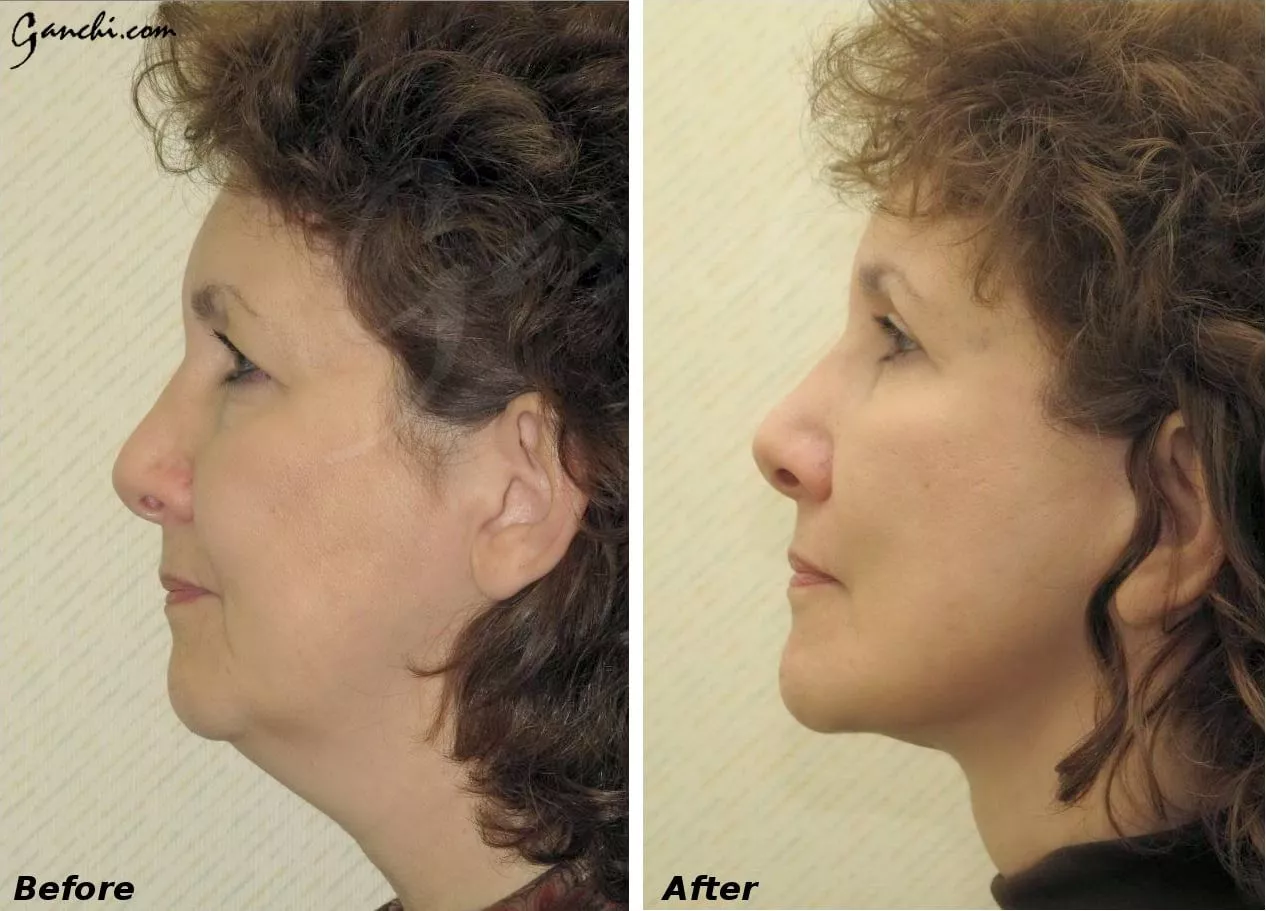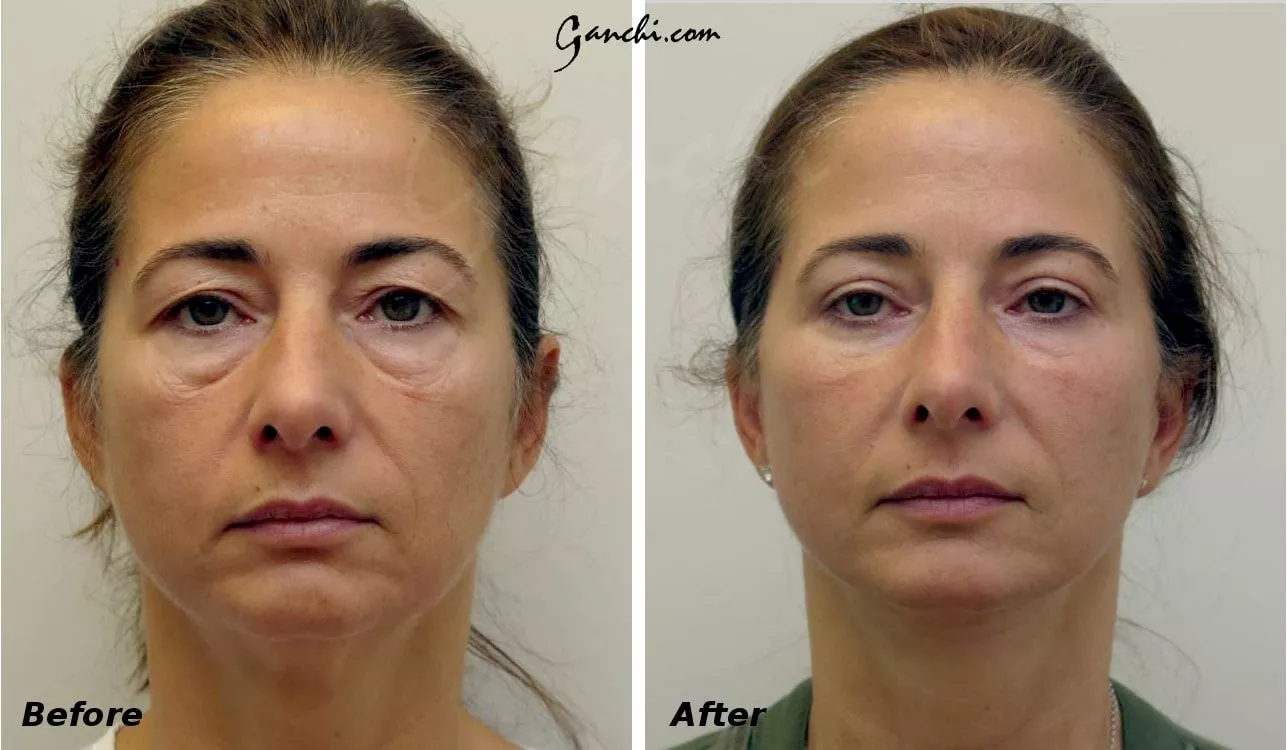Facelift Before and After Image Gallery

Multiple improvements to the neck, jawline, lines by corners of mouth, lower eyelids and upper eyelids
A facelift remains one of the top sought-after plastic surgery procedures in the United States. Facelifts are still popular for good reason. A well-done facelift makes a patient look younger, brighter, refreshed and well rested.
Over the years, plastic surgeons have developed many different facelift techniques. Here are the three most common types of facelifts.
Full Surgical Facelift
The most complete facelift is also the most invasive. This is the full surgical lift, also known as a traditional facelift or rhytidectomy. This procedure is done on an outpatient basis, under general anesthetic or local anesthesia and sedation. It can be used to address any and all areas of your face that need to be lifted and rejuvenated. This encompasses everything from jaw to the forehead, including chin, jaw line, mid-face sagging and creases, eyes, and brow.
Many patients opt for this traditional facelift to eliminate one or more signs of aging. These include the deep creases that can develop along the sides of the nose to the corners of the mouth, excess facial fat or not enough fat in the right areas, and slack stretched out skin.
During a traditional facelift, incisions are made and the skin is lifted off the face and the skin and underlying tissue are tightened. Then the skin is repositioned smoothly over the face. Depending on the patient’s particular situation, the plastic surgeon may decide to remove excess skin or fat.
The incision is usually made along the hairline or in a place where it would not easily be noticed after the surgery.
The skin will be bruised and swollen for a few weeks after the procedure and patients may feel some numbness in the area of the surgery. Patients must wear a bandage for the first 48 hours. Stitches are removed after 7-10 days. Most people are ready to resume normal, non-physically stressful activities within a couple of weeks.
Mini Facelift
A mini facelift is a relatively new cosmetic surgery procedure. This is the perfect procedure for patients looking to have “a little work done.” Ideally, these people have just begun to notice the first signs of aging and don’t want a longer, more complicated procedure. It’s great for people in their 40s and early 50s, but can be done at almost any age. Here is some more information about mini facelifts:
- Also known as the weekend facelift, the mini facelift is quicker and less invasive than a traditional lift, and with a shorter recovery time.
- A mini facelift address the middle part of the face including cheeks, jaw-line, neck, and the folds running next to the nose downwards to the mouth.
- Much like the traditional facelift, the mini facelift involves lifting and tightening the skin and repositioning the underlying tissue and muscle. Excess skin and fat may also be removed.
- A mini facelift is done under general anesthesia or under local anesthetic and sedation. Your plastic surgeon will go over these two options with you.
- Patients usually wear a bandage for the first 48 hours following surgery. Stitches are removed in about 7-10 days, at which time patients can usually return to regular (not physically stressful) activities.

Multiple improvements to the upper and lower eyelids but also had neck and jawline improvements
Non-Surgical Facelift Procedures
Some patients are looking for a less invasive way to gaining a brighter and more youthful facial appearance. For these individuals, one or more of the non-surgical facelift procedures could be the answer.
Botox as a Facelift Procedure
Botox is one of the most widely used non-surgical facelift procedures. The word Botox is actually a brand name for a specially prepared and diluted form of a neurotoxin from the bacterium Clostridium botulinum. In its full and natural strength, this neurotoxin is responsible for botulism, a disease that can result in paralysis. In its diluted form, it can be used to soften wrinkles, crows feet, and forehead lines. Other neurotoxins used in cosmetic procedures include Dysport and Xeomin.
The way Botox, Dysport and Xeomin work is by blocking the signal from the nerves to the muscles, thereby relaxing and softening crinkles and lines formed by those muscles as they bend the skin.
Botox is injected into the skin. Several injections and treatments may be needed to get the effect patient and doctor are looking for. A series of Botox injections will typicall last 3-4 months but this will vary by patient, dose given, how many times the muscle has been injected before and even age.
If done correctly and by a qualified injector, risks from Botox injections are minimal. However, sometimes a patient may experience a headache or bruising following treatment. These are temporary and will normally disappear within 48 hours
Non-Ablative Laser Treatment
During non-ablative laser treatment, an intense beam of light is played across the skin to stimulate the production of new collagen. This laser is adjusted to bypass the outer layer of skin and work below the skin’s surface without causing injury to the epidermis (the outer layer of skin). The production of new collagen not only improves the health of the skin but makes it look fresher and firmer as it reduces lines and wrinkles.
Usually multiple treatments are needed to achieve the desired results, however, fine results can be seen with each treatment. Side effects from non-ablative laser treatments are mild and are usually limited to minor redness.
Cosmetic Injectable Fillers
Injectable fillers work differently from either Botox type facelift treatments or non-ablative lasers. Injectable wrinkle fillers are injected into targeted areas of the face to fill lines, creases, and wrinkles.
A variety of injectable fillers are available for use, but the two most common types are collagen and hyaluronic acid (Restylane, Juvederm, etc.). Each type of cosmetic filler works in a slightly different way and offers differing results. Most will fill lines and wrinkles in less than 30 minutes and results last from about four months to a year or even two. Collagen fillers need to be redone more frequently than treatments applied with hyaluronic fillers. Repeated injections of either filler may help stimulate the body’s own natural production of collagen, therefore less filler is needed over time to achieve the same look.
Side effects of this treatment are rare but can include redness, swelling and bruising at the site of the injection as well as tiny, visible bumps of filler appearing beneath the skin. All these reactions normally improve over time, and you should certainly let us know if any of these develop for you.
If you’d been thinking about a facelift, give us a call. We can help you decide which of these options would be best for you right now.
